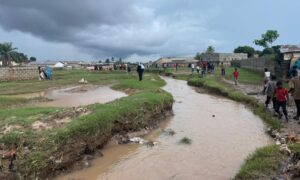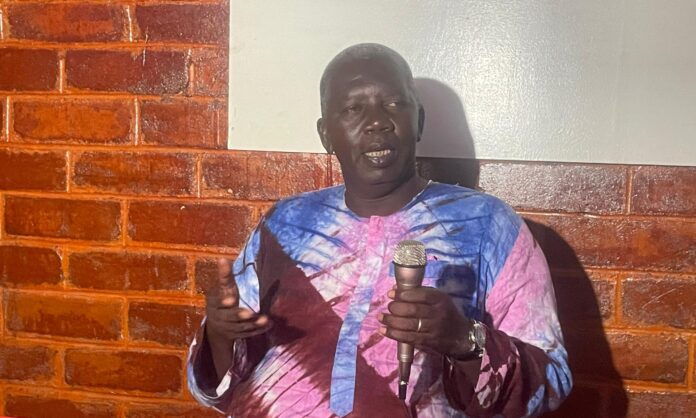By: Dawda Baldeh
The representative of the Alkalo of Dippa Kunda, Surahata Sohna, has identified unregulated waste disposal from tie and dye activities and the rise of illegal settlements as major causes of the blockage of the Kotu stream, which has led to frequent flooding in the area.
“Encroachment, illegal settlements, and the indiscriminate disposal of waste from tie and dye are among the factors causing the environmental crisis we are experiencing,” he stated, while speaking at a training session for journalists on environmental reporting in Katong. The session was funded by the West Africa Coastal Areas Resilience Investment Project (WACA ResIP2) and organised by the Gambia Press Union.
Mr. Sohna urged the government to support the establishment of a dedicated factory where locals can carry out their manufacturing activities in a regulated environment. He recalled how the area was pristine several decades ago, when the stream was clean and used for fishing and other purposes. “Previously, the stream was very clean, and you could see the fish swimming. It was a pleasant location, but now it has turned into a nightmare for residents,” he lamented.

While acknowledging the importance of tie and dye to the local economy, he warned that the environmental consequences can no longer be ignored. “The waste produced by tie and dye is harming our trees, degrading our water quality, and making life difficult,” he added. He also highlighted the growing problem of illegal settlements along the stream, which he said have severely disrupted water flow and worsened flooding. “People frequently settle illegally along the stream, which has impacted the water flow,” he emphasised.
Meanwhile, Isatou Keita, President of the Gambia Press Union, commended the WACA project for funding the training and urged journalists to report accurately on environmental issues to raise public awareness, particularly concerning the Kotu stream, where a major restoration effort is underway. She underscored the critical role journalists play in influencing environmental policy through their coverage.
WACA project officials also emphasised the importance of training media professionals on environmental issues, noting that their initiative focuses on restoring and improving the Kotu stream, which stretches across eleven kilometres and passes through several communities. They expressed optimism that the project, once completed, will significantly enhance the region’s environmental quality and improve the lives of residents.




